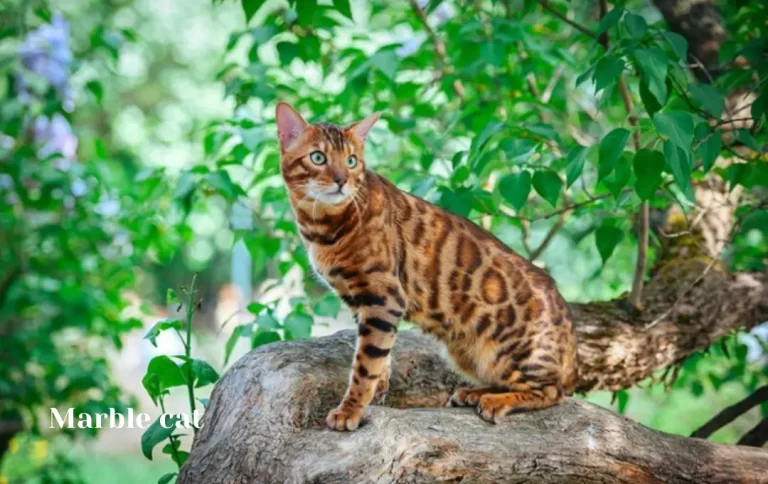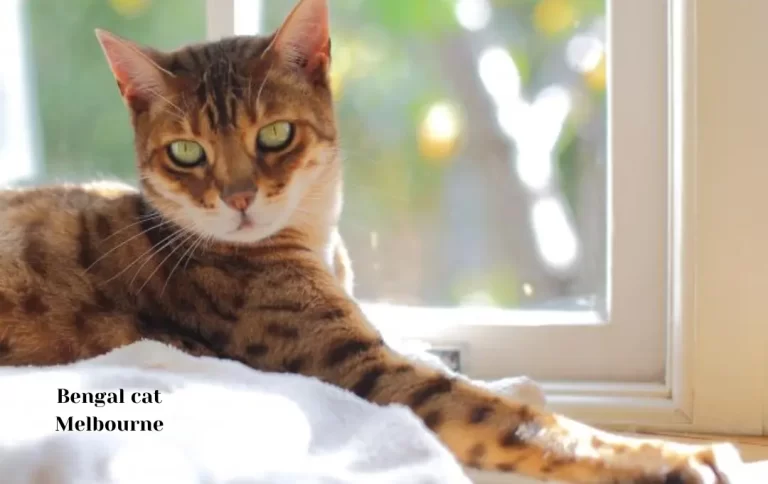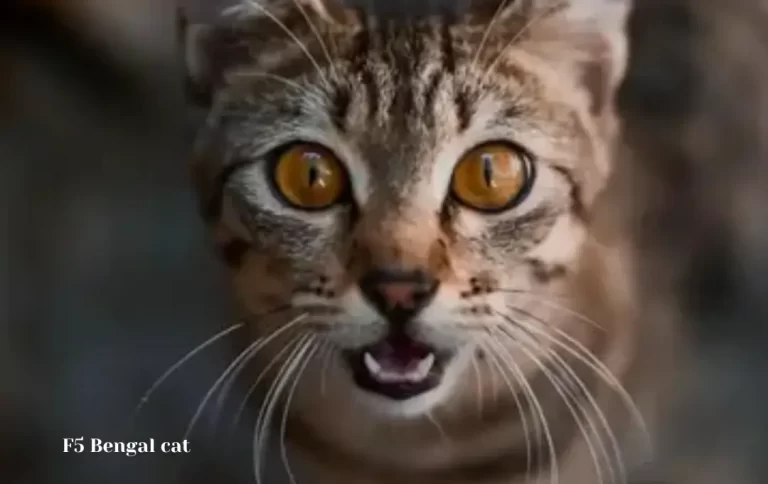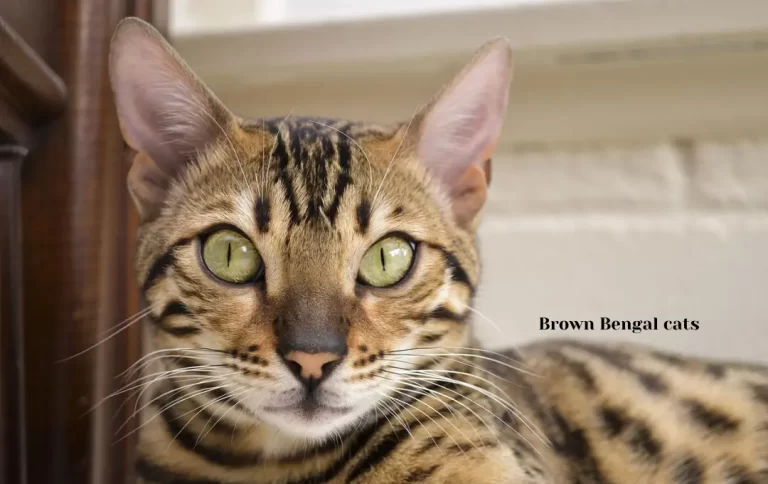Affordable Bengal Leopard Cat Price | Bengal Cat Prices: Updated Guide for 2023
The unusual and alluring Bengal leopard cat, also known by its scientific name Prionailurus bengalensis, has won the hearts of cat lovers all over the world. Bengal cats have grown to be a very popular breed among owners of pets thanks to their unusual spotted coat, which is evocative of their wild parent, the Asian leopard cat. However, one of the main factors for people who want to adopt a Bengal leopard cat into their family is the cost of these stunning and distinctive felines.
This article seeks to offer a thorough investigation of Bengal leopard cat prices, illuminating the nuances and variables that affect the price of obtaining one of these magnificent pets. Let’s first take a quick look at Bengal leopard cats to better understand why they are so highly regarded by cat lovers all over the world before getting into the pricing details.
Detailed Information on Bengal Leopard Cats
The Bengal leopard cat is a hybrid breed resulting from the crossbreeding of the Asian leopard cat (ALC) with domestic cats, primarily the Egyptian Mau, Abyssinian, and Siamese breeds. This intentional hybridization was undertaken to capture the appearance of wild leopards while retaining the temperament and domestication of a house cat.
Bengal cats are known for their:
Distinctive Appearance: Bengal cats sport a coat covered in rosettes or marbled patterns that resemble those of their wild ancestors. These markings can come in various colors, including brown, silver, and snow.
Playful and Energetic Nature: Bengals are renowned for their high energy levels and love for play. They are intelligent, and active, and require mental stimulation to keep them happy and engaged.
Affectionate Temperament: While they possess a hint of their wild ancestry, Bengal cats are generally affectionate and form strong bonds with their human companions.
Low-Maintenance Grooming: Their short coat is relatively low-maintenance, making them a popular choice among cat lovers.
Due to these appealing traits, Bengal leopard cats have gained popularity as pets, captivating the hearts of those who seek a unique and beautiful feline companion.
Bengal Leopard Cat Prices: Factors at Play
The price of Bengal leopard cats can fluctuate significantly, and understanding the factors that influence these variations is crucial for prospective owners. Several key factors can impact the price of a Bengal cat, including:
Breed Lineage and Pedigree: Bengal cats with exceptional pedigrees, featuring multiple generations of well-documented ancestors, often command higher prices.
Coat Color and Pattern: Bengal cats come in various colors and patterns, with certain variations, such as snow Bengals, being rarer and thus more expensive.
Age and Health: Kittens are typically more affordable than fully grown Bengal cats. Health and vaccination records can also affect pricing.
Breeder Reputation and Location: Reputable breeders who prioritize the health and well-being of their cats may charge higher prices. Additionally, Bengal cat prices can vary by geographic location.
Supply and Demand: Bengal cats remain in high demand, and prices can rise during periods of increased interest.
Understanding these factors is crucial for making an informed decision when seeking a Bengal leopard cat. In the following sections of this guide, we will delve deeper into each of these factors, offering insights and guidance to help you navigate the world of Bengal cat pricing effectively.
Pricing Information for Bengal Leopard Cats
When it comes to Bengal leopard cat pricing, several key factors come into play, each contributing to the overall cost of acquiring one of these exquisite felines. In this section, we will explore the factors that influence Bengal leopard cat prices and provide insights into the typical price ranges you can expect. We will also compare Bengal leopard cat prices to those of other breeds, helping you gain a better perspective on their relative cost.

Prices-Affecting Factors
Breed Lineage and Pedigree:
Bengal cats with exceptional lineage and pedigrees often command higher prices. Pedigree cats have well-documented ancestry, showcasing multiple generations of Bengal ancestors. These cats are considered more “purebred” and are typically pricier.
Coat Color and Pattern:
Bengal cats come in a variety of coat colors and patterns, including brown spotted/rosette, marble, and snow (which includes variations like seal lynx, seal mink, and seal sepia). The rarer the coat color and pattern, the higher the price tends to be.
Age and Health:
Kittens are generally more affordable than adult Bengal cats. However, the price can vary based on the kitten’s age, with younger kittens typically being more expensive. Health records, including vaccinations and medical history, can also impact pricing.
Breeder Reputation and Location:
Reputable breeders who prioritize the health, socialization, and well-being of their Bengal cats often charge higher prices. Additionally, the breeder’s location can influence pricing, with Bengal cats being more expensive in certain geographic regions.
Supply and Demand:
Bengal cats remain in high demand due to their striking appearance and engaging personalities. When demand exceeds supply, prices can rise accordingly.
Typical Price Ranges
Bengal leopard cat prices can vary widely depending on the factors mentioned above. As of my last knowledge update in September 2021, here are typical price ranges you might encounter:
Pet Quality Bengals: Pet-quality Bengal kittens without breeding rights can range from $800 to $2,500, with the average falling between $1,000 and $1,800.
Show Quality Bengals: Bengal cats with exceptional lineage, coat patterns, and potential for show competitions can range from $2,500 to $10,000 or more. Exceptional show-quality Bengals may command even higher prices.
Please keep in mind that these prices can change over time due to shifts in the Bengal cat market, breeder reputation, and other factors.
Price Comparison: Bengal Leopard Cats vs. Other Breeds
When comparing Bengal leopard cat prices to those of other cat breeds, it’s essential to note that Bengals are often on the higher end of the price spectrum. This is due to their unique appearance and characteristics. For comparison:
Bengals are generally more expensive than most domestic cat breeds.
They can be in a similar price range as some other exotic or hybrid breeds, such as Savannah cats and Chausies.
Bengal prices are typically lower than those of rare purebred wildcat hybrids like the serval or caracal.
Ultimately, the price of a Bengal cat reflects its individual qualities, and prospective owners should carefully consider their budget and preferences when seeking to bring one of these remarkable felines into their homes.
Finding Bengal Leopard Cats for Sale
When searching for Bengal leopard cats for sale, it’s crucial to do your due diligence to ensure you are getting a healthy and well-cared-for cat from a reputable source. This section will guide you on how to find Bengal cats for sale from reputable breeders and explore other options like adoption and rescue as well as online marketplaces.

What is the life expectancy of a Bengal leopard cat?
The average life expectancy of a Bengal is between 12 to 16 years when properly cared for and fed an appropriate, good-quality diet to suit their age.
Reputable Breeders
How to Identify a Reputable Breeder:
Check Breeder Associations: Reputable breeders are often affiliated with Bengal cat breed associations, such as The International Bengal Cat Society (TIBCS). You can verify a breeder’s membership with these organizations.
Visit the Breeder’s Facility: If possible, visit the breeder’s facility in person. This allows you to see the living conditions of the cats and assess their overall health and well-being.
Ask for References: Reputable breeders should be willing to provide references from previous buyers who can vouch for their cats’ health and the breeder’s ethics.
Review Breeder Websites: Reputable breeders often have informative websites that detail their breeding practices, cat care, and available kittens. Look for transparency in their information.
Health Guarantees: Good breeders will provide health guarantees and ensure that their cats are up-to-date on vaccinations and veterinary care.
Ask About Socialization: Bengal kittens should be well-socialized from an early age. Ask about their socialization practices and how they introduce kittens to different experiences and people.
Questions to Ask Breeders:
- Can I see the kitten’s parents? What is the kitten’s pedigree?
- Can I see health records and veterinary certificates?
- Are the kittens litter-trained and well-socialized?
- What is the kitten’s feeding routine and diet?
- What is the breeder’s policy on spaying/neutering and breeding rights?
- Do they offer a written contract or health guarantee?
- How do they handle transportation and shipping if needed?
Adoption and Rescue Options
If you are open to adopting a Bengal cat or giving a home to a rescued cat, consider the following:
Rescue Organizations: Look for Bengal cat rescue organizations in your area or broader network. These organizations often have Bengal cats in need of loving homes.
Animal Shelters: Check local animal shelters and humane societies for Bengal cats. Sometimes, Bengal cats are surrendered to shelters and are available for adoption.
Breed-Specific Rescues: Some organizations specialize in rescuing and rehoming specific breeds, including Bengal cats. They may have Bengal cats available for adoption.
Online Marketplaces and Classifieds
While online marketplaces and classifieds can be a convenient way to find Bengal cats for sale, exercise caution:

Research Sellers: Vet the sellers carefully. Look for clear photos of the cat, descriptions of their living conditions, and a willingness to answer questions about the cat’s health and history.
Meet in Person: Whenever possible, meet the seller and the cat in person before making any financial commitment. This allows you to assess the cat’s temperament and health.
Ask for Documentation: Request documentation of the cat’s health history and vaccinations. A reputable seller should be willing to provide this information.
Avoid Scams: Be cautious of scams and fraudulent listings. Never send money without verifying the authenticity of the seller.
Finding a Bengal leopard cat for sale is an exciting endeavor, but it’s essential to prioritize the cat’s welfare and ensure that you are dealing with reputable sources, whether it’s a breeder, rescue organization, or individual seller.
Price Negotiation and Considerations
When you’ve found a Bengal leopard cat that you’re interested in acquiring, whether through a breeder or another source, there are several important price negotiation considerations and additional costs to keep in mind. This section will guide you through negotiating with breeders, understanding additional costs, and preparing for long-term expenses.
Negotiating with Breeders:
Respectful Communication: Approach breeders with respect and professionalism. Show genuine interest in their cats and breeding practices.
Be Informed: Do your research on Bengal cat prices, taking into account factors like breed lineage, coat quality, and the breeder’s reputation. This knowledge will give you a solid foundation for negotiation.
Ask About Discounts: Inquire if the breeder offers any discounts. Sometimes breeders may provide discounts for various reasons, such as if you are adopting multiple kittens or if you have a strong interest in one of their cats.
Timing Matters: Bengal cats are often in high demand, and prices may vary seasonally or based on supply and demand. Consider negotiating during the offseason when prices may be more flexible.
Consider Non-Financial Benefits: Sometimes, breeders may be willing to negotiate on price if they believe you can provide an excellent home for their cat. Demonstrating your commitment to the cat’s well-being can be a persuasive factor.
Be Open to Terms: If the breeder is not willing to lower the initial price, consider negotiating for other benefits, such as including vaccinations, microchipping, or spaying/neutering in the price.
Additional Costs:
Vaccinations: Bengal cats require regular vaccinations to protect them from common feline diseases. Ensure you budget for initial vaccinations and follow-up boosters.
Microchipping: Microchipping is essential for identifying and locating your Bengal cat if it ever gets lost. Some breeders include microchipping in the purchase price, while others may charge extra.
Spaying/Neutering: Responsible breeders often include spaying or neutering in the purchase price. If not, factor in the cost of this procedure.
Supplies: Be prepared to purchase cat supplies such as a litter box, scratching posts, toys, food dishes, and a comfortable bed.
Long-term Expenses:
Food: High-quality cat food is essential for your Bengal’s health. Budget for a diet that meets their nutritional needs.
Veterinary Care: Regular check-ups and preventative care are vital. Budget for routine veterinary visits and potential unexpected medical expenses.
Grooming: Bengal cats are generally low-maintenance when it comes to grooming, but you may need to invest in grooming supplies like brushes.
Licensing and Insurance: Some regions require pet licensing. Consider pet insurance to help cover unexpected medical expenses.
Training and Enrichment: Bengal cats are intelligent and active. Budget for toys, puzzles, and other enrichment activities to keep them mentally stimulated.
Boarding or Pet Sitting: If you travel frequently, factor in the cost of boarding or pet-sitting services.
Lifetime Commitment: Remember that bringing a Bengal cat into your life is a long-term commitment. They can live for 12-16 years or more, so be prepared for the financial responsibility throughout their life.
By carefully considering these price negotiation and expense-related factors, you can make an informed decision about acquiring a Bengal leopard cat and ensure that you provide them with the best care possible throughout their life.
Bengal Leopard Cat Price Trends
The market dynamics of Bengal leopard cats can be better understood by being aware of their pricing trends. It’s crucial to remember that Bengal cat pricing can differ significantly depending on a number of variables, such as breed quality, region, and breeder reputation. We will look at historical price patterns, regional price variances, and some forecasts for the future (based on data up to my most recent update in September 2021).
Historical Price Trends:
Historically, Bengal leopard cat prices have followed a generally upward trajectory. This is due to several factors:
Rising Popularity: Bengal cats gained popularity steadily over the years, attracting more buyers and enthusiasts. Increased demand can push prices higher.
Selective Breeding: Breeders have continuously worked on improving the breed, focusing on traits like coat quality, pattern, and temperament. Show-quality Bengals with exceptional lineage have commanded premium prices.
The rarity of Coat Variations: Some Bengal coat variations, such as snow Bengals (seal lynx, seal mink, and seal sepia), are rarer and, therefore, more expensive than the more common brown spotted/rosette Bengals.
Breeder Reputation: Established and reputable breeders tend to charge higher prices due to their commitment to quality and ethical breeding practices.
Regional Price Variations:
Prices for Bengal leopard cats can vary significantly from one region to another. Several factors contribute to regional price variations:
Cost of Living: Regions with a higher cost of living, such as major cities, may have higher Bengal cat prices to cover the breeder’s expenses.
Breeder Concentration: Bengal breeders may be concentrated in certain regions, and local competition can influence pricing.
Supply and Demand: Regional differences in demand for Bengal cats can also affect prices. In areas with a higher demand than supply, prices may be higher.
Breeder Reputation: In regions where reputable breeders are more prevalent, prices may be relatively consistent and higher due to the quality of cats available.
Future Projections:
While I cannot provide real-time data or future projections beyond my last update in September 2021, several trends were notable at that time:
Continued Popularity: Bengal cats were expected to remain popular due to their striking appearance and engaging personalities.
Increased Regulation: In some regions, there were discussions about stricter regulations on breeding practices and the sale of hybrid breeds, which could potentially impact pricing and availability.
The rarity of Coat Variations: Rarer coat variations like snow Bengals were likely to maintain their higher prices due to their scarcity.
Breeder Ethics: Ethical breeding practices were gaining importance among buyers, and breeders adhering to high standards were expected to maintain strong demand.
To get the most up-to-date information on Bengal cat prices and future projections, it’s advisable to consult recent sources, including Bengal cat breed associations, reputable breeders, and cat market analysts. Additionally, prices can change seasonally and with market fluctuations, so conducting thorough research before making a purchase decision is crucial.
Legal and Ethical Considerations
Before acquiring a Bengal leopard cat, it’s essential to be aware of legal restrictions on ownership and to consider the ethical aspects of purchasing one. Bengal cats are unique due to their hybrid ancestry, which can lead to specific legal and ethical considerations.
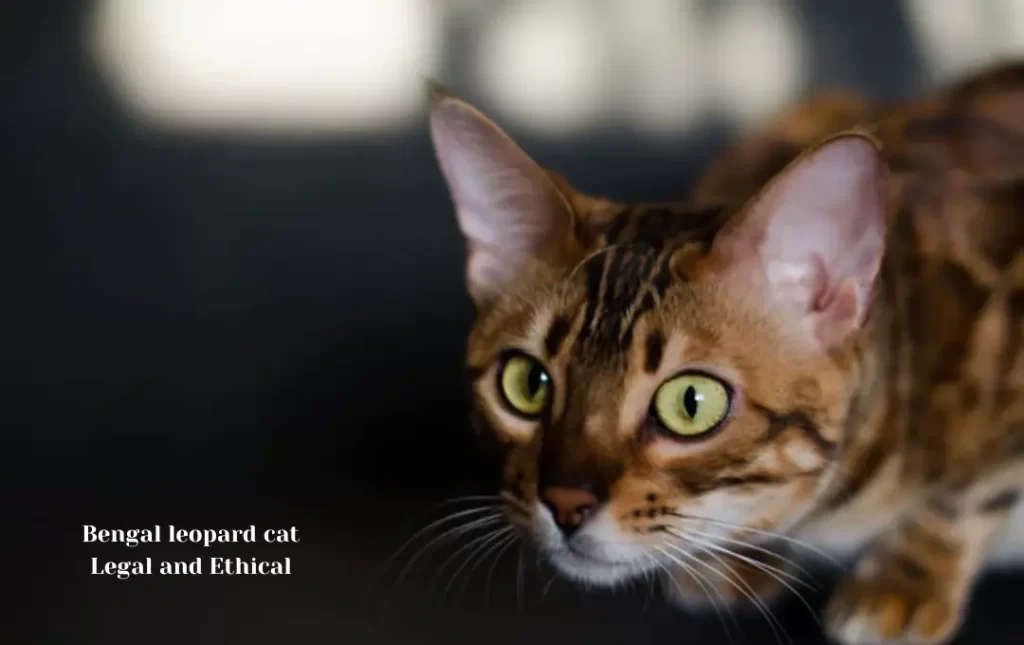
Legal Restrictions on Ownership:
Ownership Regulations: The legal regulations regarding Bengal cat ownership can vary by country, state, or locality. Some places may have restrictions on owning Bengal cats or other hybrid breeds due to concerns about public safety or potential ecological impacts if they were to escape and reproduce in the wild.
Licensing and Permits: In some areas, owning a Bengal cat may require a special license or permit. It’s essential to research and comply with local laws and regulations to ensure you are legally allowed to keep a Bengal as a pet.
Wild Animal Laws: In some places, Bengal cats may be subject to laws regulating the ownership of wild or exotic animals, even though they are domesticated hybrids. These laws may require special enclosures or conditions for ownership.
Breeding Restrictions: Some jurisdictions may have specific regulations governing the breeding of Bengal cats. Breeders may need to obtain permits or adhere to breeding standards.
It’s crucial to consult local authorities and research the specific legal requirements in your area before acquiring a Bengal leopard cat. Failure to comply with legal regulations can lead to confiscation of the cat and legal consequences.
Ethical Considerations in Purchasing Bengal Leopard Cats:
Responsible Breeding: Ethical considerations in Bengal cat ownership start with choosing a responsible breeder. Ethical breeders prioritize the health and well-being of their cats and adhere to breeding standards. They do not engage in unethical practices, such as overbreeding or inbreeding.
Supporting Ethical Practices: By purchasing a Bengal cat from an ethical breeder who follows responsible breeding practices, you are supporting the betterment of the breed and ensuring that cats are raised in a healthy and humane environment.
Avoiding Unscrupulous Sellers: Avoid purchasing Bengal cats from sellers who operate kitten mills, engage in unethical breeding practices, or have poor living conditions for their cats. Such purchases can inadvertently contribute to the suffering of cats.
Consider Adoption: Ethical considerations extend to considering adoption or rescue as an option. There are Bengal cats in need of homes through rescue organizations and shelters. Adopting a cat in need can be a compassionate choice.
Lifelong Commitment: Owning a Bengal cat is a long-term commitment. Ensure that you have the time, resources, and dedication to provide proper care and attention throughout their life.
Environmental Considerations: As hybrid cats, Bengal cats have unique environmental considerations. It’s important to keep them indoors or in secure outdoor enclosures to prevent them from impacting local ecosystems.
Being aware of legal regulations and ethical considerations is essential for responsible Bengal cat ownership. By making informed and ethical choices, you can provide a loving and caring home for your Bengal leopard cat while contributing to the betterment of the breed and respecting legal requirements in your area.
frequently asked question
Conclusion
In conclusion, getting a Bengal leopard cat is a fun and rewarding experience, but there are a few things to keep in mind. Making an informed choice requires being aware of the elements that affect Bengal cat costs, such as breed history, coat quality, breeder reputation, and geographic location. Negotiating with breeders, planning a budget for extra charges like immunizations and long-term fees, and abiding by legal requirements are other crucial phases in the process.
Ethical considerations also play a significant role in Bengal cat ownership. Choosing a responsible breeder or considering adoption from rescue organizations and shelters ensures that you provide a loving and humane home for your cat. Remember that Bengal cats are a long-term commitment, and their well-being should be a top priority.


